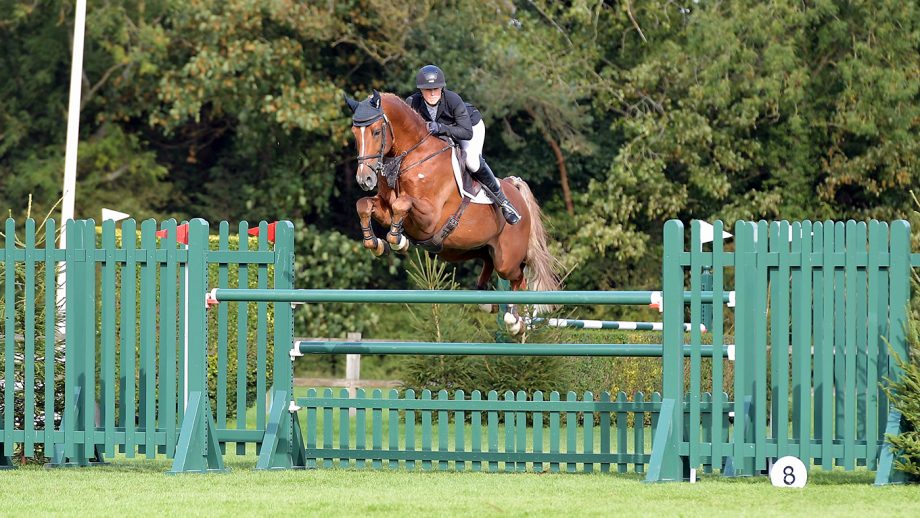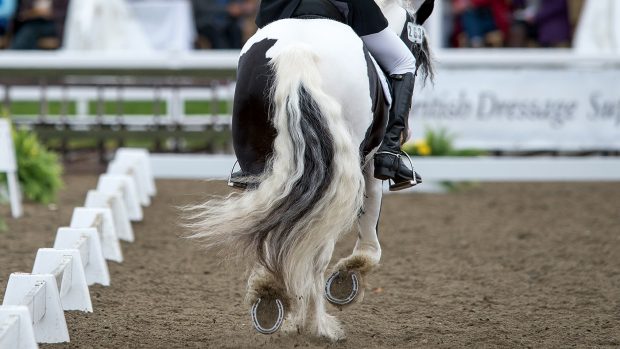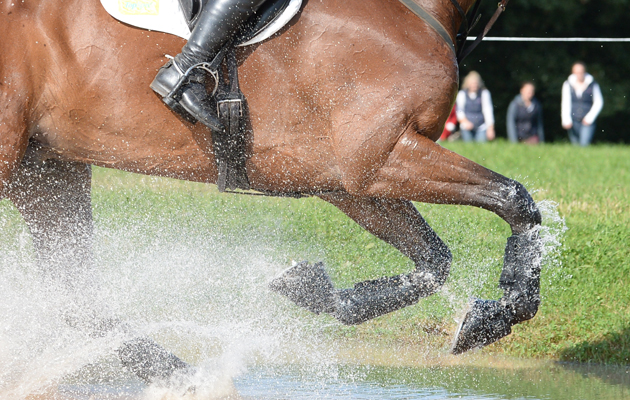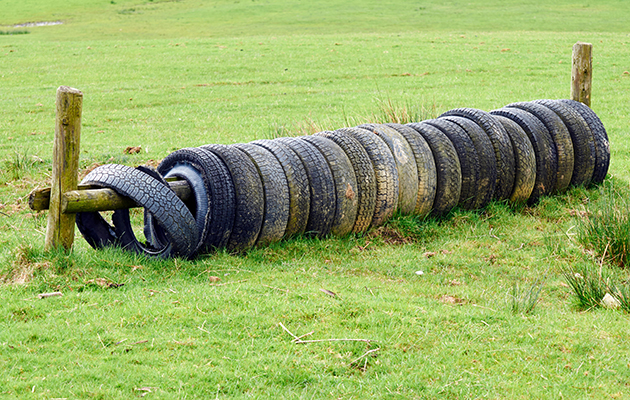Sharpen up your showjumping basics with this curved grid exercise
Aim
One of the most important steps in producing a showjumping horse is to develop rhythm.
This grid will encourage you to use the correct leg and hand aids to maintain consistent rhythm. It will give a useful indication of your horse’s jumping pace — too slow and five strides will be difficult to achieve, but too fast and you won’t fit them in. The exercise will also train your eye to focus on a new destination, riding over one pole and looking ahead to plan for the next.
The exercise

1. Lay out the poles to allow five strides (just over 18m) on each corner, from mid-pole to mid-pole. Leave plenty of room on the long, straight sides at first, as you don’t want to overwhelm the horse at the outset with challenges that come too thick and fast.
2. Start at walk, so the horse understands what is being asked of him. Once he is happy with this, progress to trot. Don’t worry about the number of strides — aim for the centre of each pole, keep a nice inside bend on the corners and use the parallel poles as a guide for straightness on the long sides. Work evenly on both reins.
3. With this established, move into canter and aim for five strides on each corner. React to what the horse is doing by using more inside leg if he falls in on the corners, or more outside rein and leg if he falls out through the shoulder. He should soon learn to stay on the correct canter lead, but be prepared to come back to trot for a stride or two if necessary to put this right.
4. Once you’re both confident at canter, on both reins, replace the poles with small cavaletti.
5. Make things more challenging by placing water trays under the cavaletti, or swapping one for some spooky fillers or a small plank. Aim to keep even, relaxed canter strides.
Article continues below…
You might also be interested in:

#SundaySchool: controlling the canter with Jessica Mendoza
The international showjumper uses a canter-on-a-circle exercise to help develop balance and control, which can be used in the ring

#SundaySchool: the showjumping ‘gym’ with Holly Smith
The international showjumper talks us through this multi-fence workout which she uses with both her younger and more experienced horses

Subscribe to Horse & Hound this spring for great savings
Tips and pitfalls
- If the horse becomes too hot and sharp, go back a level. Try the exercise again in trot, or even walk, building it back up once he relaxes.
- Shorten the distances slightly if he struggles to cover the ground. The measurements suggested are standard — much will depend on his age, experience, fitness, schooling level and length of stride.
- Mastering this exercise may take months, especially with a young horse. Be patient and remember that a lot of good work is done in walk.
For much more great content, don’t miss the current issue of Horse & Hound magazine, on sale now



